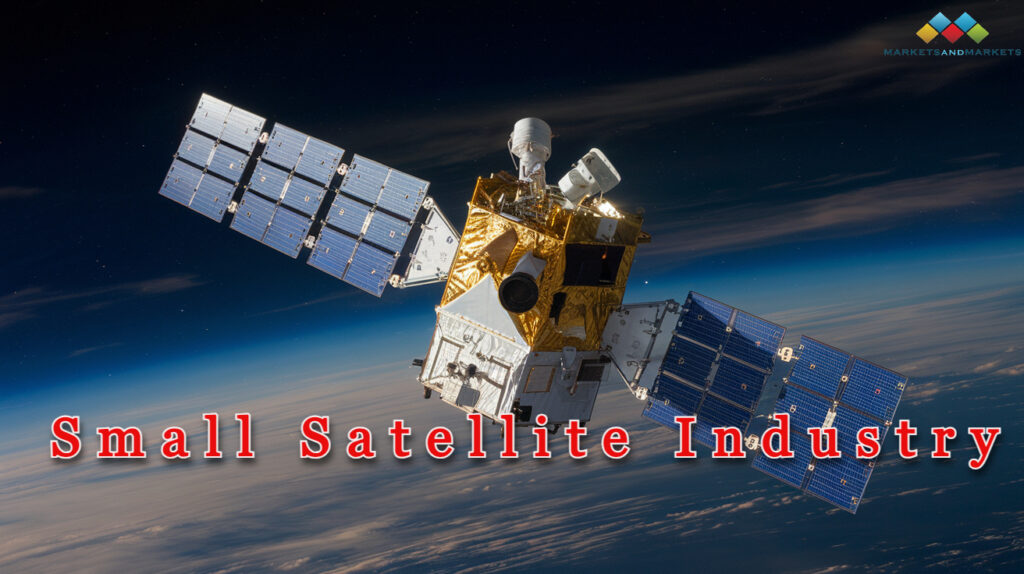The small satellite industry has witnessed significant growth in recent years, becoming an integral component of the expanding space economy. These compact, cost-effective satellites – known as smallsats—serve diverse purposes, including Earth observation, communications, and scientific research. Technological advancements, particularly in miniaturization, have fueled this demand, alongside the growing participation of private space companies and the evolving requirements of sectors such as telecommunications, environmental monitoring, and defense. As innovation accelerates, the need for small satellites continues to surge, transforming industries across the globe.
The small satellite market is poised for significant growth, with an estimated value of USD 5.2 billion in 2024, projected to reach USD 11.2 billion by 2029, growing at a CAGR of 16.6%. This expansion is driven by several factors, including government initiatives, technological advancements, and the rising demand for satellite-based services like high-resolution imaging, broadband connectivity, and scientific research. Government agencies, especially in the U.S., are playing a pivotal role in fostering this growth through programs like NASA’s CubeSat Launch Initiative, which provides launch opportunities for educational and research payloads.

Download PDF Brochure @
https://www.marketsandmarkets.com/pdfdownloadNew.asp?id=150947396
Key areas of growth include:
Mega-constellations: The deployment of large satellite constellations for global internet coverage and IoT connectivity will continue to drive demand for small satellites.
Sustainability Initiatives: As concerns about space debris grow, there will be an increasing focus on developing sustainable satellite technologies, including de-orbiting systems and reusable launch vehicles.
Military and Government Applications: Governments and military agencies around the world are also leveraging small satellites for defense and intelligence purposes. These satellites offer cost-effective solutions for real-time surveillance, reconnaissance, and communications.
Artificial Intelligence and Automation: The integration of AI and machine learning into satellite operations will improve the ability of small satellites to perform autonomous tasks, such as collision avoidance and predictive maintenance.
Key Market Drivers
1. Technological Advancements
Recent innovations in material sciences and satellite design, such as lightweight composites and sophisticated payload technology, have significantly reduced the cost and complexity of satellite launches. The integration of smart technologies like AI and machine learning into satellite systems is enabling more efficient and flexible satellite deployments.
Advances in data processing, cost-effective production, and propulsion systems are further contributing to market growth, allowing satellites to be launched with greater precision, meeting the growing demand for high-quality satellite services.
2. Public-Private Partnerships
Strategic partnerships between government and private companies are accelerating innovation in satellite technology. Companies like SpaceX and Amazon’s Project Kuiper are developing satellite constellations to provide global broadband coverage, especially in remote areas. These partnerships foster investment and technological progress, driving the small satellite market’s overall expansion.
Market Segmentation
By Mass: The Small Segment Leads the Market
The small satellite segment, comprising satellites weighing less than 1000 kg, is projected to grow at the highest CAGR during the forecast period. This growth is fueled by advances in downsizing technology, making it possible to build smaller, more efficient satellites. The increasing need for high-resolution Earth imaging and reliable broadband services is particularly driving demand for small satellites. These satellites are transforming industries like Earth observation, telecommunications, and environmental monitoring.
By Subsystem: Payloads Segment Witnesses Strong Growth
The payload segment of the small satellite market is expected to grow rapidly. Payloads, which include advanced sensors, communication devices, and imaging equipment, play a crucial role in satellite operations. Increasing demand for high-resolution imaging, sophisticated sensors for security applications, and environmental monitoring technologies is boosting the growth of the payload market. These technologies enable more accurate data collection, making satellites valuable tools for applications like disaster management, climate studies, and urban planning.
By End Use: Commercial Sector Driving Growth
The commercial segment of the small satellite market is set to experience the highest growth rate. Small satellites offer a cost-effective way for commercial enterprises to gather critical data, particularly in the fields of communication and Earth observation. As technology continues to lower the costs of satellite launches and production, companies are increasingly using small satellites for geospatial data collection. This geospatial data is vital for industries like agriculture, insurance, and urban development, further driving market growth.
Regional Insights: North America Dominates the Market
North America holds the highest growth rate in the global small satellite market. The region’s strong space industry, led by private companies like SpaceX and Amazon’s Project Kuiper, is driving significant investment in small satellite technology. Additionally, government initiatives focusing on national security and communication infrastructure are boosting demand for satellite services. The U.S. is expected to maintain its leadership in the global small satellite market through continuous innovation and strategic alliances with other global space players.
Ask for Sample Report @
https://www.marketsandmarkets.com/requestsampleNew.asp?id=150947396
Top Leading Players in the Small Satellite Industry:
Major companies operating in the small satellite market include SpaceX (US), Lockheed Martin Corporation (US), Airbus Defense and Space (Germany), Northrop Grumman (US), and L3Harris Technologies, Inc. (US). These companies are investing heavily in research and development to advance satellite technology and maintain a competitive edge in this rapidly growing market.